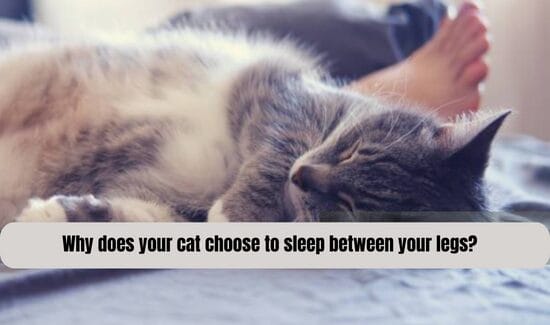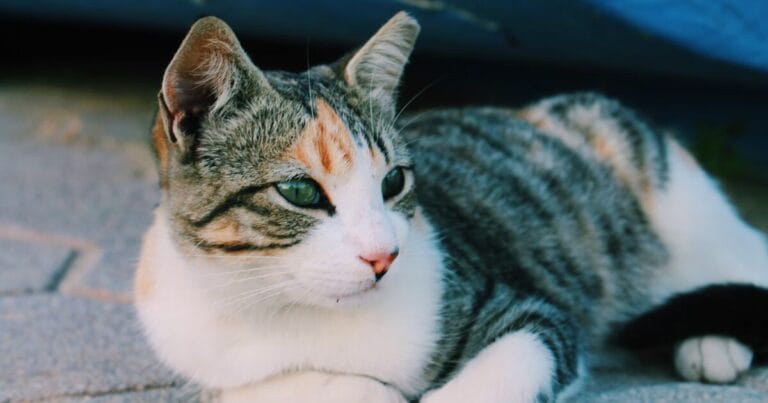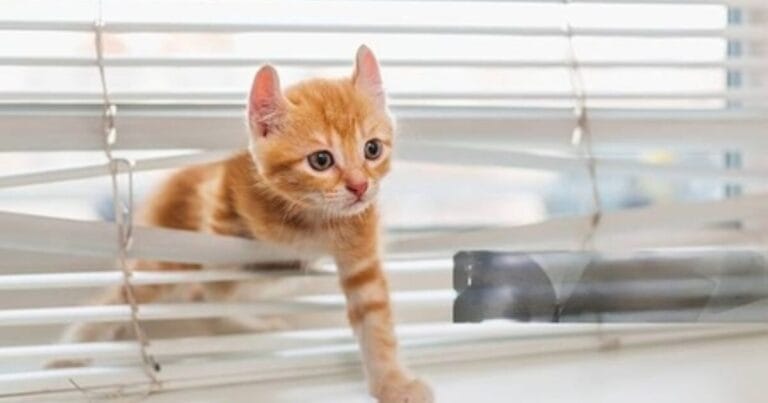Curiosity has led us to explore the boundaries of nature, often sparking fascinating questions that pique our interest.
Today, we tackle one such enigma that has left pet owners and wildlife enthusiasts wondering. Can a barn owl eat a cat? Join us on a journey through the realm of these majestic creatures as we unveil the truth behind their diet preferences and shed light on this captivating debate.
Discover the realities of owl and cat interactions, and learn crucial strategies for ensuring cat safety around these skilled nocturnal hunters.
What are Barn Owls?
Barn owls (Tyto alba) are a unique and fascinating owl species found in many regions worldwide, including North America, Europe, and Asia.
Barn owls are medium-sized with distinctive heart-shaped facial disks and long legs adapted for hunting on the ground. They are mostly nocturnal hunters, using their excellent hearing and silent flight to locate prey in the darkness.
Diet Habit of Barn Owls:
In terms of diet, barn owls primarily feed on small mammals such as rodents (mice, voles, shrews), as well as insects like beetles and moths.
These birds are opportunistic hunters and will consume other small animals, such as birds, reptiles, amphibians, and even fish if they come across them during their nightly hunts.
Can a Barn Owl Physically Eat a Cat?
Whether a barn owl can physically eat a cat is valid, as these birds of prey are known for their impressive hunting abilities and diverse diets. While it may seem like a far-fetched idea, there have been instances where barn owls have been documented to have preyed on domestic cats.
Physical Capabilities And Feeding Habits Of Barn Owls:
Firstly, it is important to understand barn owls’ physical capabilities and feeding habits. These birds are skilled hunters with excellent eyesight and hearing that allow them to locate prey even in low-light conditions. They also have sharp talons and a powerful beak to catch and kill their game.
The size difference between the two animals is a significant factor in whether a barn owl can physically eat a cat.
Size Comparison between a barn owl and a cat:
The size comparison between a barn owl and a cat is an important aspect to consider when discussing whether or not a barn owl can eat a cat.
Barn owls are medium-sized birds of prey, ranging in size from 13-20 inches in length and weighing between 14-24 ounces.
On the other hand, cats come in various sizes and breeds, with the average domestic house cat measuring around 18 inches long and weighing between 8-10 pounds.
Barn owls are lightweight compared to most domestic cats, making it challenging to overpower their feline prey.
Additionally, it’s essential to consider the physical attributes of these two animals. Barn owls have sharp talons and beaks that allow them to tear through flesh easily.
However, they do not have strong jaw muscles like cats do. Cats are known for their powerful jaws and sharp teeth for hunting small prey such as mice, rats, and birds.
Furthermore, barn owls primarily hunt at night, while cats are more active during dawn and dusk but can also be active throughout the day. This makes it less likely for a barn owl to encounter a cat during hunting as they have different schedules.
Hunting Behavior
Hunting is a natural and essential behavior for all animals, including the barn owl. These birds of prey have evolved over millions of years to become highly skilled hunters, with their sharp talons and powerful beaks perfectly adapted for catching and consuming their game.
However, as an opportunistic hunter, the barn owl’s diet can vary greatly depending on its size, location, and availability of food sources.
Hearing characteristics:
Regarding hunting behavior, the barn owl has a few unique characteristics that set it apart from other birds of prey. One notable feature is its exceptional hearing ability.
Unlike most birds, who rely heavily on sight during hunting, barn owls can locate their game primarily through sound. This is due to their asymmetrical ears, positioned at different heights on their head, allowing them to pinpoint small sounds accurately.
Another important aspect of the barn owl’s hunting behavior is its silent flight. This stealthy approach allows them to sneak up on unsuspecting prey without detection. Their specialized feathers enable them to fly almost silently through the air, making it easier for them to surprise their victims.
Instances of Barn Owls Eating Cats:
While it may seem rare, there have been several reported instances of barn owls preying on cats. These incidents have sparked debates among cat owners and bird enthusiasts about the potential danger barn owls pose to domestic pets.
One notable case is from 2019 in Essex, England, where a family’s beloved cat, named Bertie, was found dead with injuries consistent with an owl attack. The owner had previously seen a barn owl flying around their property and believed it was responsible for killing their cat. This incident caused quite a stir in the local community and raised concerns about the safety of outdoor cats living near areas inhabited by barn owls.
Another reported incident happened in Wales in 2016 when a resident spotted a barn owl carrying off a neighbor’s cat. The witness described seeing the owl swoop and grab the unsuspecting cat before flying away. Despite efforts to track down the missing cat, it was never found again.
In both cases, the opportunistic barn owls likely viewed the cats as easy prey. Barn owls are known for their excellent eyesight and hunting skills, making them efficient predators. They primarily hunt small mammals such as rodents but will also go after other birds and even reptiles if given the opportunity.
Case Studies and Reports:
Case studies and reports have shown that barn owls are not known to prey on cats. While it is true that barn owls are apex predators, they primarily feed on small mammals such as mice, voles, shrews, and rats. Studies have found that 95% of a barn owl’s diet consists of rodents.
One study conducted by researchers at the University of California studied the diet of barn owls in agricultural areas for three years. They found that out of 1,029 prey items collected from regurgitated pellets, only two were identified as domestic cats. This accounts for less than 0.2% of their overall diet.
Another study published in the Journal of Raptor Research analyzed the diet composition of barn owls in urban areas in Spain over five years. Out of 368 prey items collected from pellets, only one was identified as a domestic cat. Similar results were found in other studies conducted in different parts of Europe and Australia.
In addition to these case studies, several reports from bird rehabilitation centers have stated that they have treated injured or sick barn owls who had consumed domestic cats. However, it is important to note that these cases are extremely rare and can be attributed to situations where the cat may have been weakened or injured before being caught by the owl.
Moreover, it is also worth mentioning that barn owls occasionally hunt during daylight hours but are primarily nocturnal hunters.
Possible Reasons for the Behavior:
There are several possible reasons why a barn owl might exhibit behavior that could be perceived as potentially threatening towards cats. While these birds of prey are not known for actively seeking out and preying on domestic felines, there are certain circumstances where they may behave in a way that appears aggressive or predatory towards them.
Territorial Marking:
One possible reason for this behavior is territoriality. Barn owls are highly territorial creatures and may perceive cats as intruders in their territory. This can lead to defensive behaviors such as swooping or dive-bombing, which could be mistaken for attempts to attack the cat. In reality, the owl is likely defending its territory and trying to scare off what it perceives as a potential threat.
Food competition:
Another reason for this behavior could be related to food competition. Barn owls primarily hunt small rodents like mice and voles, but they have also been known to prey on other small animals such as rabbits and shrews.
If scarce resources are scarce, the owl may view a cat as competition for these food sources and try to intimidate it to secure its meals.
Environmental Factors:
Furthermore, some experts suggest that certain environmental factors may contribute to aggressive behavior toward cats from barn owls.
For example, suppose there needs to be more suitable nesting sites or roosting areas for the owls in a particular area. In that case, they may become more protective of their preferred spaces and view any potential threats (such as cats) with increased hostility.
Ethical Considerations:
When discussing the potential for a barn owl to eat a cat, it is important to consider the ethical implications of such an act. While nature can be brutal and unforgiving, humans are responsible for ensuring that animals are not unnecessarily harmed or subjected to cruelty.
One of the main ethical considerations in this scenario is whether or not the barn owl’s natural
behavior of hunting and consuming prey should be interfered with. In other words, should humans intervene and prevent the owl from eating a cat, even if it is instinctual?
On one hand, some argue that all animals have a right to survive and thrive in their natural habitats without human interference. Therefore, if a barn owl catches and consumes a cat as part of its raw diet, it should be allowed without human intervention.
On the other hand, others may argue that humans often consider domestic cats and hold a higher value than wild animals. In this case, it may seem unethical for an owl to prey on someone’s beloved pet.
Another important consideration is the impact on both species involved. While barn owls are predators and naturally feed on small mammals like mice and rats, cats are not their typical prey. Consuming a cat may not provide sufficient nutrition for the owl and could potentially harm its health in the long run.
Moreover, domestic cats are typically not equipped with defense mechanisms against larger predators like owls.
Human Responsibility in Protecting Pets from Predators:
As pet owners, it is our responsibility to ensure the safety and well-being of our beloved furry friends. This includes protecting them from potential predators such as barn owls. While barn owls are not known to prey on cats actively, there have been instances where cats have fallen victim to these birds of prey. Therefore, we need to take certain measures to keep our pets safe.
1. Keep an Eye on Your Pet’s Outdoor Activities:
One of the best ways to protect your cat from barn owls is by monitoring their outdoor activities. Cats are natural hunters and can easily become prey if left unsupervised in areas where barn owls reside. If you live in a room with a high population of barn owls, try keeping your cat indoors during dawn and dusk when these birds are most active.
2. Secure Enclosures:
If you have a backyard or garden where your cat spends time outdoors, consider securing the area with fencing or netting. This will prevent any potential predators from entering and harming your pet. Ensure the enclosure is tall enough so that barn owls cannot fly over it and that there are no gaps or holes through which they can enter.
3. Provide Shelter:
Barn owls usually hunt in open fields or farmland, but they may also seek Shelter in trees or abandoned buildings near residential areas.
Importance of Understanding Natural Predatory Behaviors:
Understanding natural predatory behaviors is crucial to understanding the relationship between animals and their prey.
We are considering whether a barn owl can eat a cat in this case. To fully understand this question, it is important to explore the importance of understanding natural predatory behaviors.
Firstly, natural predatory behaviors are innate instincts developed over thousands of years through evolution. These instincts dictate how an animal hunts, captures, and consumes prey.
For example, a barn owl evolved into a silent hunter with exceptional night vision and acute hearing skills. This enables them to hunt effectively in low light conditions without alerting their prey.
Secondly, understanding natural predatory behaviors can help us understand the dynamics between predators and their potential prey. It allows us to predict which animals are most likely targeted by certain predators based on their behavior and physical characteristics.
Regarding barn owls and cats, it is essential to consider that barn owls typically hunt small mammals like mice, voles, rabbits, and even small birds. Cats may not fit this category as they are larger than typical prey species.
Furthermore, knowledge about natural predatory behaviors can help us better manage interactions between different animal species. By understanding how predators behave towards their prey, we can take necessary precautions or put in place measures to prevent any harm to our pets or other domestic animals.
Alternatives to Preventing Barn Owls from Eating Cats:
While barn owls primarily feed on small mammals such as mice, voles, and rats, there have been instances where they have been known to prey on cats. This can understandably be a concern for cat owners who live in areas with high populations of barn owls. However, various alternatives can be explored to mitigate the risk of barn owls preying on cats.
1. Install Cat-proof Fencing:
One effective way to prevent barn owls from accessing your cat is by installing fencing around your property. The fence should be 6-8 feet tall and have a fine mesh or netting to prevent the owl from entering your yard.
2. Keep Cats Indoors:
While this may not necessarily stop a determined barn owl from attacking a cat through an open window or door, keeping your cat indoors is still one of the most effective ways to protect them from predators.
3. Provide Nighttime Shelter:
Barn owls are nocturnal hunters and are most active during the night when cats are typically asleep. Providing a safe place for your cat to sleep at night, such as an enclosed shelter or inside a secure enclosure, can greatly reduce their chances of being attacked by an owl.
4. Use Motion-activated Lights:
Installing motion-activated lights around your property can startle and deter barn owls from hunting in your yard at night.
Conclusion:
Barn owls are known for being skilled hunters and predators with keen eyesight and sharp talons. As opportunistic hunters, they prey on various small animals, such as rodents, insects, and birds.
Firstly, barn owls typically prey on smaller animals that can easily overpower and carry away. While the question “Can a barn owl eat a cat?” may arise due to the owl’s size compared to a cat’s. It’s important to note that cats are more agile and possess sharp claws that can pose a significant threat to the owl. This means that even if the owl attempts to attack a cat, it may not successfully catch or kill it.
Most cats are active daily, while barn owls are nocturnal creatures. This temporal difference reduces the chances of them crossing paths in the first place, as barn owls hunt at night when cats are typically indoors or sleeping.
Furthermore, cats have developed defensive behaviors against potential predators, including birds of prey like barn owls. They exhibit quick reflexes and can climb trees or run away when threatened. Additionally, their instinct guides them to stay away from unfamiliar noises or movements to avoid potential danger.
In conclusion, while the question may be intriguing, the interaction between barn owls and cats is influenced by the cats’ agility, their daily activity patterns, and the defensive mechanisms they have developed over time.




And it has analogue?